Flying Missions in a remote desert: In search of our ancestral trails II
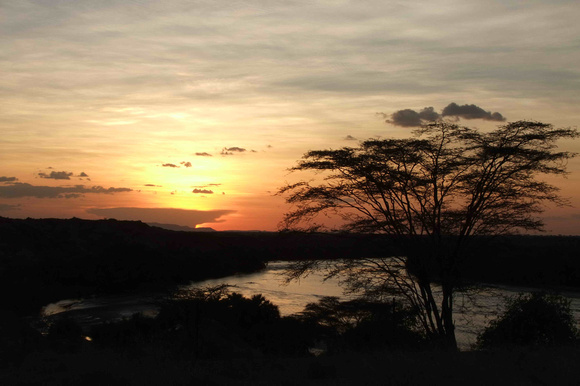

After a successful flight of the Autodesk octo-copter in the late afternoon of the first day, the ground started to cool off as the sun went down. So did our over-excited brains. Yet, a whole new range of challenges were still waiting for us. How to keep logistics going is just one of them.
TBI Turkwel camp is in the middle of nowhere. Being off the grid, the camp’s power supply totally relies on solar batteries and diesel generators. And they could barely satisfy our copter’s heavy demand of power. Our captain Gonzalo Martinez had to keep an eye on all the copter batteries so that they could be charged in shifts. My job was much easier. As our captain ran around the lab round the clock, I had to make sure that he was well hydrated. So I followed wherever he went with a full bottle of water… A firefighter, perhaps…
As night fell, the desert underwent a dramatic transformation: instead of heat, insects dominated the air. And they were everywhere! Where there was light, they gathered! In the lab, in my room, even on my computer screen, swarms of insects of various kinds poured in from far and wide. I was wise to set up a decoy: my flash light pointing to the white wall beside me, just to avoid ending up covered by storms of bugs when I was working on my laptop…
Apart from the frenzy insects, the night was dark and quiet. Thousands of stars shined in the moonless sky, blinking with vigor. The air was so clear and calm that even the reflection of Venus was visible on the wrinkled water of Turkwel River. It was a real pity that such beauty of the night could not be recorded by my camera.
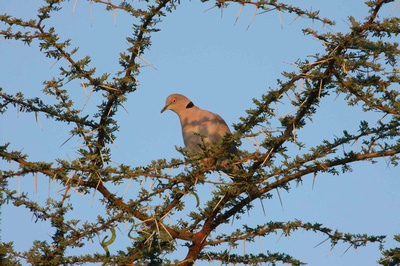

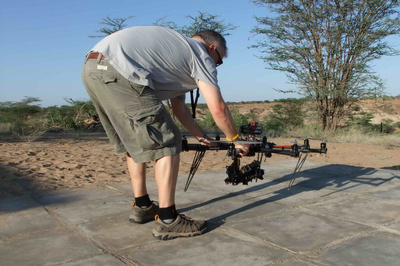

Woken by the first greetings from birds, we started our second day of testing. Why? Well, according to our pilot and mechanic Gonzalo, it was the first time for this machine to fly in such a hot, dry and dusty place. He didn’t even know if it’s going to make it… Should anything happen to it, we still have the chance to sort it out in the camp, which is much better than going to the field with a copter and coming back with a wreck…
The wind was another difficulty for flying in the field. Turkana Basin is generally windy for most of the days and the situation could be worse out in the field. Even though our “spaceship” is well armed with advanced sensors, radio transmitters and fast microchips, whether or not it would hold its ground in strong wind was yet to be tested.


Under moderate wind and temperature, the copter took off! From the monitoring software, all temperature readings from the copter were green, even after some acrobatic performances. Success! The “flying spider” functioned very well in the overwhelming heat!
Now another subject! The magic of this machine is not only about its precise remote controlling, but also its ability of offering LIVE bird’s eye view! It carries a small camera that delivers real-time video from the copter to either a computer screen or a pair of virtual reality goggles. In other words, with the goggles on, our captain could see from the copter as if he were sitting in the copter himself! A bit of Air Force technology! And with these state-of-the-art equipments, the cruising area of the copter could be as large as a circle with its radius of 1000 meters! We could hardly see it when it was really far away!
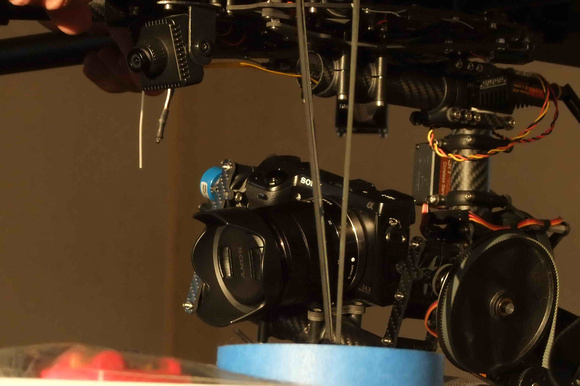

That’s not the end of it! With the capability of carrying yet ANOTHER camera on an articulated frame, and with full remote control solutions, the copter can take detailed aerial photos and full HD videos from almost any angle we want! A Sony NEX-7 with an 18-55mm kit lens did the job perfectly. All these answer the question of how the copter would help us with searching for our ancestral trails: we could send this robotic agent out into corners that have never been visited by men and acquire valuable information from the sky!
When the copter was cruising around the camp, making aerial videos on the way, aboriginals spotted this “secretive” air unit as well. They gathered in small groups, looking at the machine startled, and probably discussed what freak it could be. For people who have minimum exposure to technology in that remote area, seeing such an eccentric (if not supernatural) object in the sky was certainly an astounding or even terrifying experience.


And it was very hard to explain what was going on if they could understand nothing but their local language… (Our photographer and computer engineer Shaan Hurley tried very very hard…)
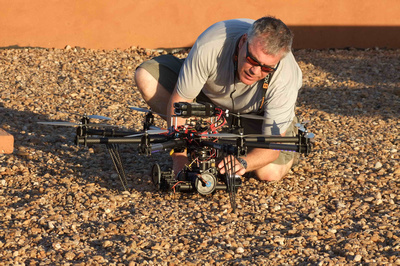

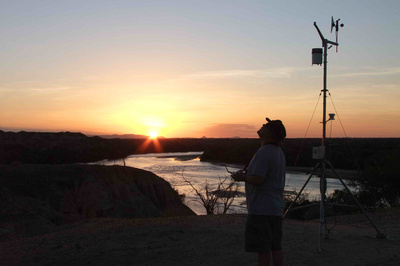

After a few other test flights in the afternoon, our mission of the day came to an end. Looking at the fresh videos capturing the splendid sunset over the camp and the Turkwel River, we were very confident that the copter would do very well in the field operations of the next day! (To be continued)
View and download photos of this post
Aerial video by Gonzalo Martinez, taken from the copter.
Comments
Last year, we had similar experience here in taking aerial photos and videos of the forestation projects in Kubuqi Desert : ) However, we used a less economical way : ( One of my colleague and the pilot were actually flying in the air.
We should learn from Deming and his team : )
Your careful explanation, combined with the outstanding photos makes this feat come alive.
We're all so proud of you, here in China, knowing that the research with which you're involved will push outward understanding of human origins.
This post and the photos read like a professional magazine article!